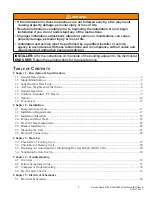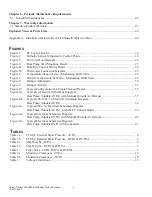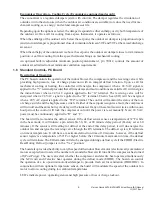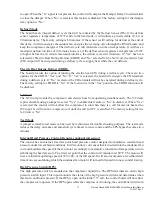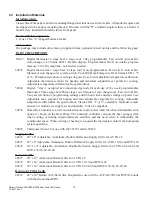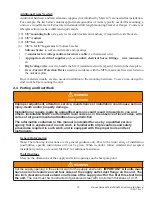
7
Marvair Classic AVPA/HVPA/HVPSA Heat Pump I&O Manual
11/2017 Rev. 7
1.5 General Operation
Refrigerant Cycle
Classic heat pumps use R-410A refrigerant in a conventional vapor-compression refrigeration cycle to
transfer heat. In the cooling mode, a double blower assembly blows indoor air across the evaporator (indoor
coil). Liquid refrigerant passing through the evaporator is boiled into gas by heat removed from the air.
The warmed refrigerant gas enters the compressor where its temperature and pressure are increased. The
hot refrigerant gas condenses to liquid as heat is transferred to outdoor air blown across the condenser
(outdoor coil) by the condenser fan. Liquid refrigerant is metered into the evaporator through a metering
device to repeat the cycle. In the heating mode, the process is reversed.
HVPSA models have 2-stage compressors with first stage cooling capacity approximately 65% of the
total cooling capacity. The 2-stage compressor provides lower start-up amps and is able to match more
precisely the cooling capacity of the heat pump with the heat load in the building. The 2-stage is only
operational in the cooling mode. A two stage cooling thermostat is required for all 2-stage compressors.
Heating Mode
During heating mode a special reversing valve reverses the flow of refrigerant through the system
exchanging the roles of the condenser and evaporator. Now the outdoor coil becomes the evaporator and
the indoor coil becomes the condenser. The refrigerant then flows through the outdoor coil, picks up heat
and becomes vaporized. The vapor then enters the compressor where it is compressed to a higher pressure
and temperature. Next it is pumped to the indoor coil where the heat will be released into the room. The
compressed refrigerant vapor will condense to its liquid state as it gives up heat. Finally, liquid flows
through a metering device into the evaporator where the cycle will be repeated.
Optional electric strip heat is available for all models. Please see Appendix A for instructions on field
installation of electric heat.
Ventilation Options
• Manual damper capable of up to 15% of rated airflow of outside air; field adjustable, no pressure
relief.
(Standard - Ventilation Configuration N)
• Manual damper capable of 0 to 450 cfm (maximum of 40% of rated airflow) of outside air; field
adjustable, no pressure relief.
(Optional - Ventilation Configuration Y)
• Manual damper capable of 0 to 450 cfm (maximum of 40% of rated airflow) of outside air; field
adjustable, includes pressure relief.
(Optional - Ventilation Configuration Z)
• Motorized, two position damper (open and closed) capable of 0 to 450 cfm (maximum of 40% of rated
airflow) of outside air; includes pressure relief. A 24-volt actuated motor controls the damper from
an external input such as: a time clock, CO2 sensor, energy management system or manual switch.
(Optional - Ventilation Configuration B)
• PowerVent with motorized damper capable of 0-450 cfm of outside air, not to exceed 40% of rated
airflow. Includes pressure relief. Ventilation intake and exhaust blowers with single motor controller.
Optional second controller for exhaust air.
(Optional - Ventilation Configuration J)
GreenWheel
®
ERV Operation (Ventilation Option "H")
The GreenWheel
®
ERV is a total energy (both sensible and latent) wheel that reduces both construction
and operating cost while ventilating the classroom to ASHRAE 62-1999 requirements. The use of the
GreenWheel ERV reduces the energy load of the outside air. Exhausting stale, inside air keeps indoor
pollutants and harmful gases to a minimum. The GreenWheel ERV has been tested and certified according
to ARI Standard 1060.



